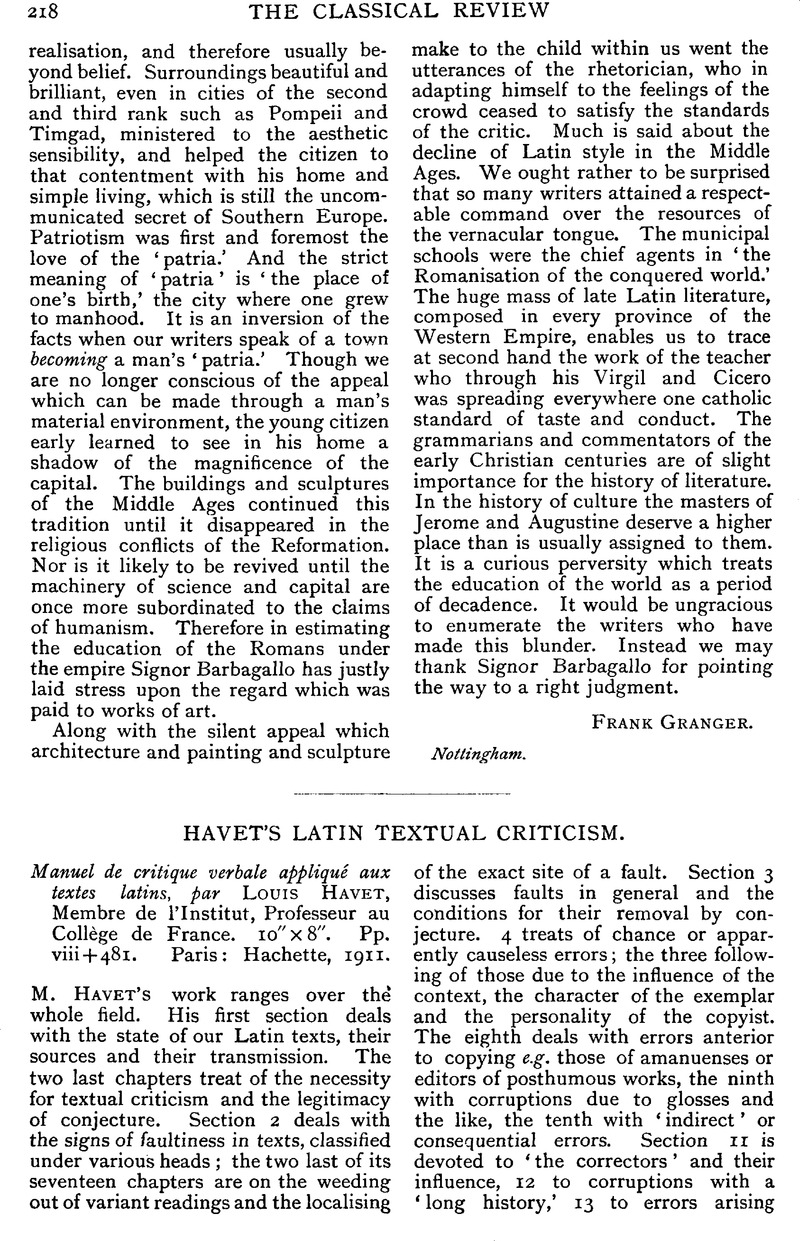No CrossRef data available.
Article contents
Havet's Latin Textual Criticism - Manuel de critique verbale appliqué aux textes latins, parLouis Havet, Membre de l'Institut, Professeur au Collège de France. 10″ × 8″. Pp. viii + 481. Paris: Hachette, 1911.
Review products
Published online by Cambridge University Press: 27 October 2009
Abstract

- Type
- Reviews
- Information
- Copyright
- Copyright © The Classical Association 1911
References
page 219 note 1 My italics.
page 220 note 1 The figures are M. Havet's convenient marks for indicating the metrical character of a verse or part of one.
page 222 note 1 This whole section on ‘Obscurity’ swarms with examples of the danger of approaching ancient texts with modern prepossessions. Perfectly sound passages such as Plautus Bacch. 615, Miles 115, Ter. Haut. 23, 266, Cic. Cat. m. 52 are declared to be corrupt simply because they have not been read as a Roman would have read them. In the passage of Tibullus any monosyllable might have been put for hunc and still the reader would have paused instinctively after uirum.


